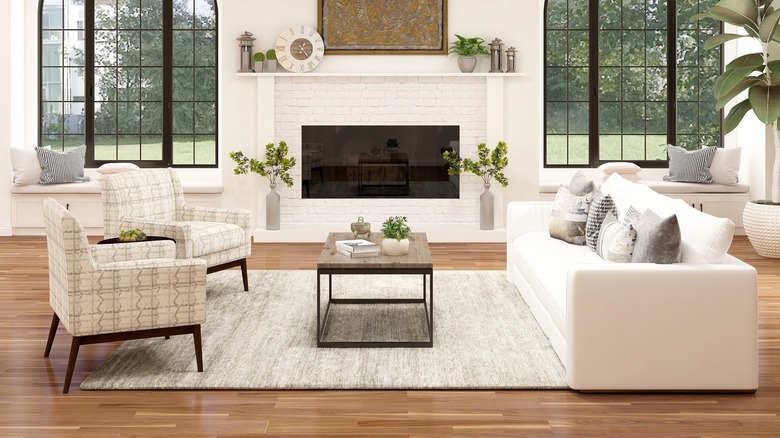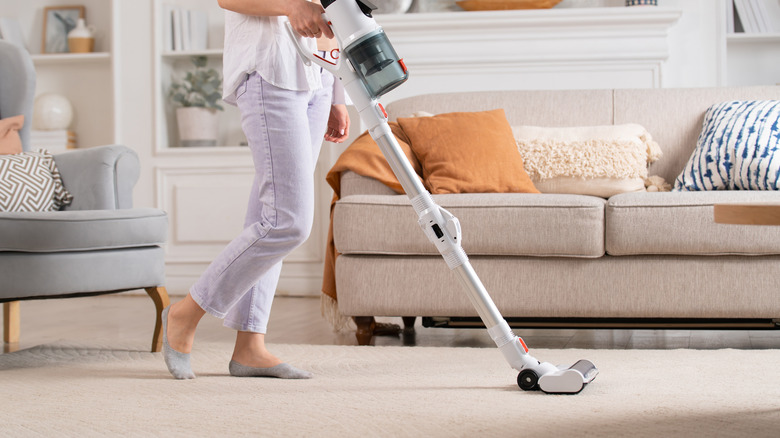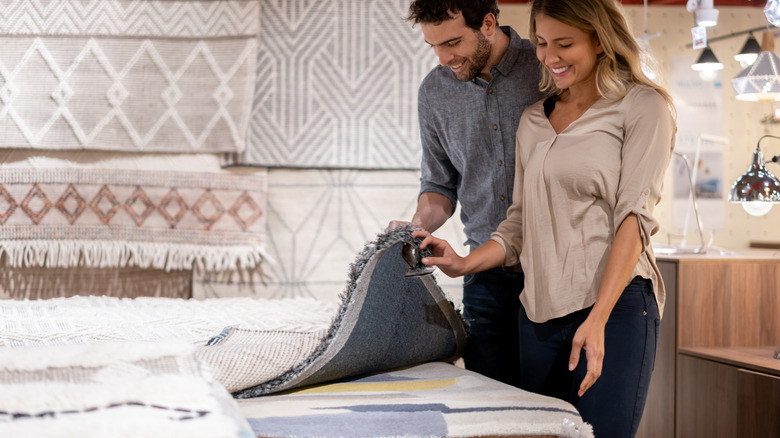Wool Rugs Have One Major Drawback, According To A Designer
Wool rugs are adored for their unmatched comfort and luxurious appearance. These exquisite floor coverings provide a soft and warm underfoot experience and add an element of sophistication to any space. However, according to esteemed designer Phoenix Grey, also known as Design Daddy on TikTok, wool rugs have significant drawbacks that cannot be overlooked (via TikTok).
Despite these exceptional qualities, Grey points out that wool rugs have two notable disadvantages. First, a wool rug can be significantly more expensive than other materials. The premium quality and craftsmanship of wool rugs contribute to their higher price tag, making them a luxury item that may not fit every budget. The absorbent nature of wool fibers is another concern. The designer explains how wool rugs tend to "suck in absolutely everything, more than your vacuum will." This can make maintenance and cleaning challenging, especially in high-traffic areas or households with children or pets prone to spills and accidents.
Drawbacks of wool
Wool rugs offer many benefits that make them highly desirable in both practical and aesthetic terms. For instance, wool is a natural fire retardant, meaning it has a high ignition threshold and will not easily catch fire. The natural elasticity of wool also allows it to withstand pressure and bounce back, maintaining its shape and appearance over time. But while wool rugs offer some advantages, they also have several drawbacks. For example, wool fibers readily soak up oily substances, making it challenging to remove such stains. If a spill has had time to penetrate deep into the fibers, it can be more difficult to clean. In humid environments or areas with high moisture levels, they can absorb excess moisture, leading to potential mildew or mold growth issues. Wool rugs also require frequent vacuuming to keep them in good condition as they attract and hold onto dust, dirt, and allergens.
Wool fibers can be sensitive to prolonged exposure to sunlight, causing the rug's colors to fade and the fabric to become brittle. This can be a concern for areas with large windows or spaces that receive direct sunlight. Brand-new wool rugs may also shed loose fibers, which can be a nuisance and require extra cleanup. Additionally, wool is a natural material that can attract carpet beetles and moths, which feed on the fibers. To protect against these pests, wool rugs require treatment with insecticides.
Alternatives to consider
Exploring alternative rug materials can provide a broader range of options to suit specific needs and budgets. Various materials are available with unique characteristics and benefits. For instance, synthetic fibers such as nylon and polyester are highly durable and resistant to stains and fading. They are often more affordable than wool rugs, are easy to clean, and can mimic the look of natural fibers. However, they may lack the softness and warmth of wool and may not be as environmentally friendly.
Natural fiber rugs like jute, sisal, and seagrass offer a distinct organic look and texture. They are often eco-friendly and biodegradable. They can add a rustic or coastal charm to a space and are usually more affordable than wool rugs but may be less comfortable underfoot. They can also be susceptible to stains and are generally less resilient than synthetic fibers. Ultimately, the choice of rug materials depends on individual preferences, specific needs, and budget constraints.


